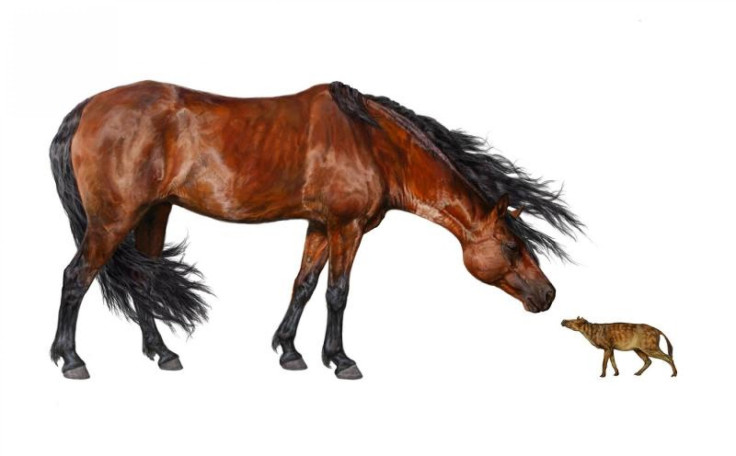Mammalian ‘Dwarfing’ Occurred Twice During Periods Of Global Warming

Scientists have known that warmer weather had a “dwarfing” effect on mammals at least once, but new findings suggest another global warming event that took place about 53 million years ago produced similar results.
Researchers studied teeth and jaw fossils of hooved mammals and discovered they experienced a decreased body mass during a period of warming called the ETM2 (Eocene Thermal Maximum 2) that lasted 80,000 to 100,000 years. The findings were recently presented at the annual meeting of the Society of Vertebrate Paleontology.
"The fact that it happened twice significantly increases our confidence that we're seeing cause and effect, that one interesting response to global warming in the past was a substantial decrease in body size in mammalian species," U-M paleontologist Philip Gingerich said in a statement.
During the Paleocene-Eocene Thermal Maximum period (PETM), a period that lasted about 160,000 years, global temperatures rose by an estimated 9 to 14 degrees Fahrenheit. There was no Arctic ice, coral reefs vanished and so did the fish that inhabited them. During the ETM2, the smaller event described in the study, temperature increase peaked at 5 degrees Fahrenheit.
Researchers studied the size of molar teeth in hoofed mammals that lived during that time period and found that the mammals’ body size decreased during ETM2. Not only that, the amount of dwarfism visible in the fossils was less than the amount seen during the longer and warmer PETM.
"Interestingly, the extent of mammalian dwarfism may be related to the magnitude of the hyperthermal event,” researcher Abigail D'Ambrosia of the University of New Hampshire said.
For instance, early horses that were the size of a dog, called Hyracotherium, lost 19 percent of their body size during ETM2. That same lineage lost 30 percent of their body size during PETM. After both warming periods, the animals returned to their normal sizes.
Unlike ancient warming events, which were most likely caused by the release of methane ice found in ocean sediments, modern global warming is attributed to the release of greenhouse gases from burning fossil fuels. But despite this difference, the latest findings may help predict future changes in mammalian sizes, Will Clyde of the University of New Hampshire said.
"Developing a better understanding of the relationship between mammalian body size change and greenhouse gas-induced global warming during the geological past may help us predict ecological changes that may occur in response to current changes in Earth's climate," he said.
© Copyright IBTimes 2025. All rights reserved.






















